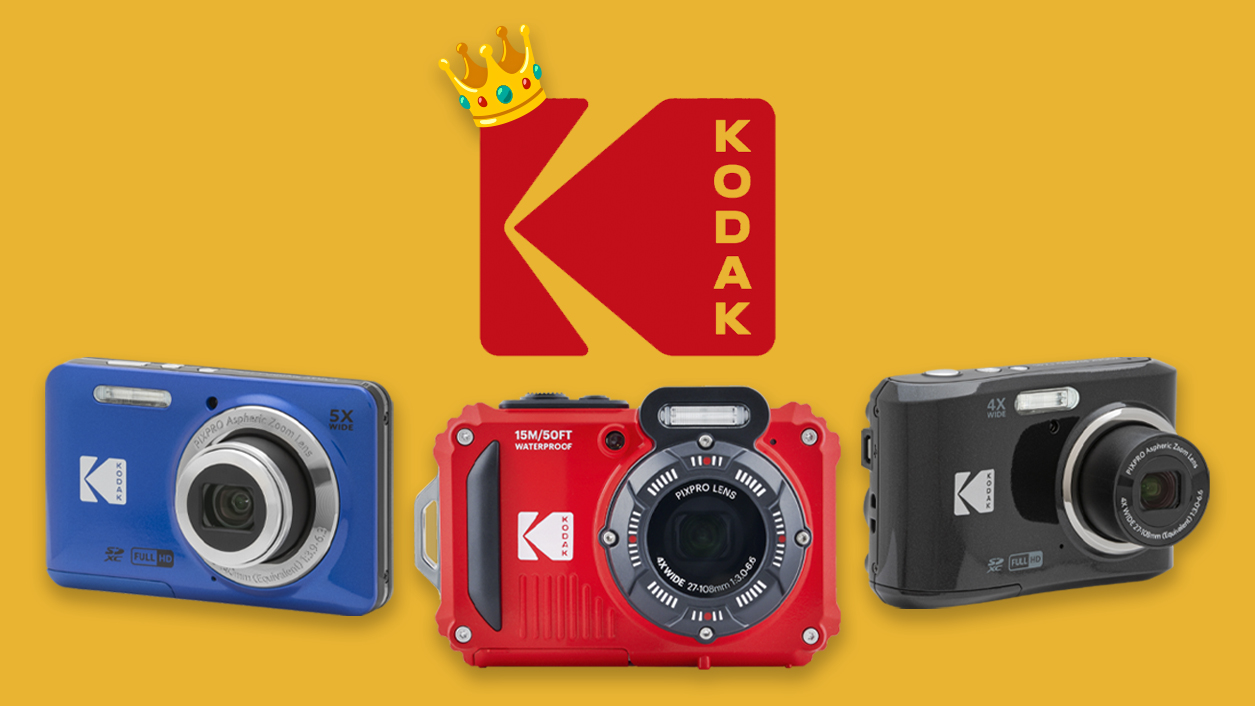WTF? Kodak just toppled Canon, Sony Fujifilm AND Nikon
Kodak has more market share than Canon, Sony, Fujifilm and Nikon in Japan, owning almost a quarter of the market

Kodak is now the number one digital camera brand in Japan. Yes, ahead of Canon, Sony and Nikon.
The iconic brand now holds a monster 22.5% market share of the digital camera market. Not just niche subcategories like compact cameras or waterproof cameras, but mirrorless cameras and DSLRs as well.
Canon comes in second, with 20.2% of the market, followed by Sony at 16.5%, with Fujifilm coming in fourth with 10.6% and… Kenko Tokina at 6.9%.
It's a truly remarkable feat. Indeed, just one camera – the Kodak Pixpro FZ55 – holds an 11% share of the market, its closest competitor being the Sony ZV-E10 with 8.2%.
So what the heck is going on here?
Let's take a closer look at this data – which comes courtesy of BCN Retail in Japan (which aggregates point-of-sale information from major retailers across the country). The story, in short, is that the best-selling cameras are entry-level, budget-friendly and small.
As such, the top ten cameras sold in April are dominated by compacts. Kodak has three (the FZ55, FZ45 and the waterproof Kodak Pixpro WPZ2), Canon has one (the IXY 650) and Kenko has one (the KC-03TY).
The best camera deals, reviews, product advice, and unmissable photography news, direct to your inbox!
The rest of them aren't compact camera but they are compact cameras. The Sony ZV-E10, the Canon EOS R50 and EOS R10, the Nikon Z30 and the Instax Mini Evo.
| Header Cell - Column 0 | Camera | Market share |
|---|---|---|
| 1 | Kodak Pixpro FZ55 | 11% |
| 2 | Sony ZV-E10 | 8.2% |
| 3 | Kodak Pixpro FZ45 | 6.0% |
| 4 | Instax Mini Evo | 5.5% |
| 5 | Kodak Pixpro WPZ2 | 5.1% |
| 6 | Canon Ivy 650 | 4.9% |
| 7 | Canon EOS R50 | 4.0% |
| 8 | Kenko Tokina KC-03TY | 2.7% |
| 9 | Canon EOS R10 | 2.4% |
| 10 | Nikon Z30 | 2.3% |
I think it's dangerous to write this development off as "it's only in Japan", or by saying "cheap compact cameras are a Gen Z fad", or any other form of dismissal that assumes this is merely an anomoly.
Recently, Sigma's CEO spoke to DPReview and about his market concerns – which essentially explain the situation.
"One reason for my concern is the increasing average price of cameras and lenses," said Kazuto Yamaki. "I'm afraid that not so many customers can afford such high-priced cameras and lenses, so we’re still trying hard to keep the retail price reasonable."
"Especially these days, the younger generation takes huge amounts of photos with smartphones. While we can expect some of them to switch from a smartphone to a camera, many may find the price gap too wide, and challenging to make the switch.
"Moving forward, I speculate that more user-friendly specifications might mean more to customers. Easier to use interfaces, a compact and lightweight body for enhanced portability, or some other specifications might be more important."
Whatever the reason, whatever the pattern does or doesn't mean, Kodak is the number one camera brand in Japan for the first time in decades. To me personally, it's a fuzzy and lovely thing to see. To the industry at large, it's a giant red flag that times are changing.
If you're interested in small and lightweight cameras for your next trip, you might be interested in the best travel cameras.

James has 25 years experience as a journalist, serving as the head of Digital Camera World for 7 of them. He started working in the photography industry in 2014, product testing and shooting ad campaigns for Olympus, as well as clients like Aston Martin Racing, Elinchrom and L'Oréal. An Olympus / OM System, Canon and Hasselblad shooter, he has a wealth of knowledge on cameras of all makes – and he loves instant cameras, too.

